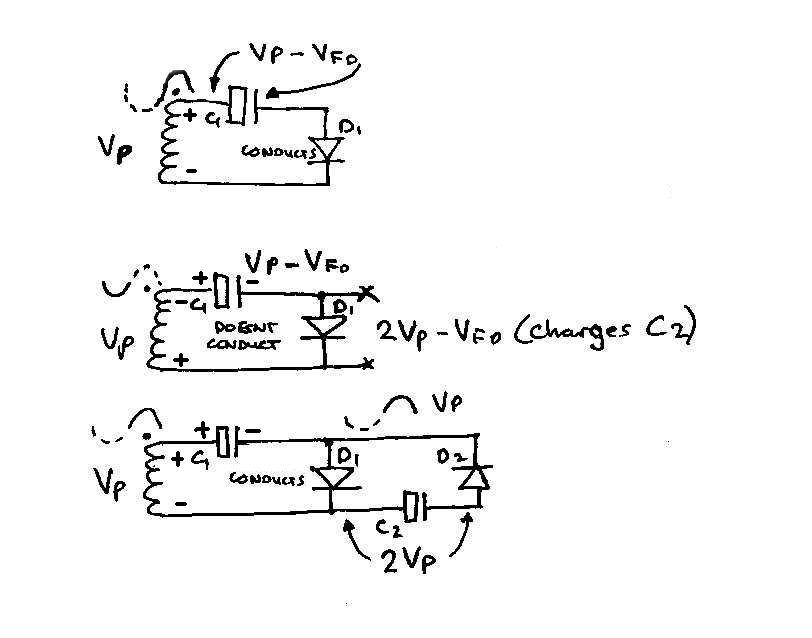I’m not 100% convinced that the explanation given in the google book is that easy to understand, so here’s my take on it, FWIW. I apologise for the awful sketches!
On the first positive half cycle (sketch 1), D1 conducts, and C1 gets charged up to the peak voltage Vp (technically minus the diode drop, but we can effectively ignore that).
On the second, negative half cycle (sketch 2) D1 doesn’t conduct, but for half a cycle, you will see that the charge on C1 is effectively in series with the secondary, so that at the points x-x the voltage is now 2Vp. (Yes it’s still minus that diode drop but that’s only 0.7v or thereabouts.) You’ll now notice that the voltage has doubled.
In sketch 3, which we’ll call the next half cycle, D1 conducts again, recharging C1. You will note that because of the behaviour of capacitors to a rate of change of voltage, the pulses effectively pass through C1 and C2, and the same behaviour takes place again in the next two stages, with a resultant 2Vp appearing across C4 as well. This gives you two capacitors in series with 2Vp across each of them, so if you take an output with the +ve terminal on the + side of C1 and the -ve terminal on the – side of C4, you have effectively quadrupled the output.
The resultant output never makes it to the full Vp x 4, because any attempt to draw current will discharge the capacitors between half-cycles. And because the charge is based on the transfer of energy through capacitors, which have a very finite series resistance, the current available is pretty limited. Despite the claim, I don’t think that all of the diodes are likely to see 2Vp as a peak inverse voltage across them – probably only the first one in a real-life situation, but I haven’t checked that in detail.
That may or may not be easier to understand. Hopefully if you read it in conjunction with the book, it may all make some sense!
(Les posted his as I was preparing this one, but I’m pretty sure that even though the words are different, the explanations are essentially the same)
Edited By Steve Garnett on 16/09/2011 23:50:37
Les Jones 1.





